What Difference Does a Degree Make?
The easiest way to see the effects of a seemingly small difference in moon position, is to consider the solar eclipse in April 136BC used by Stephenson. The image below shows the path of the eclipse with ΔT set to zero.
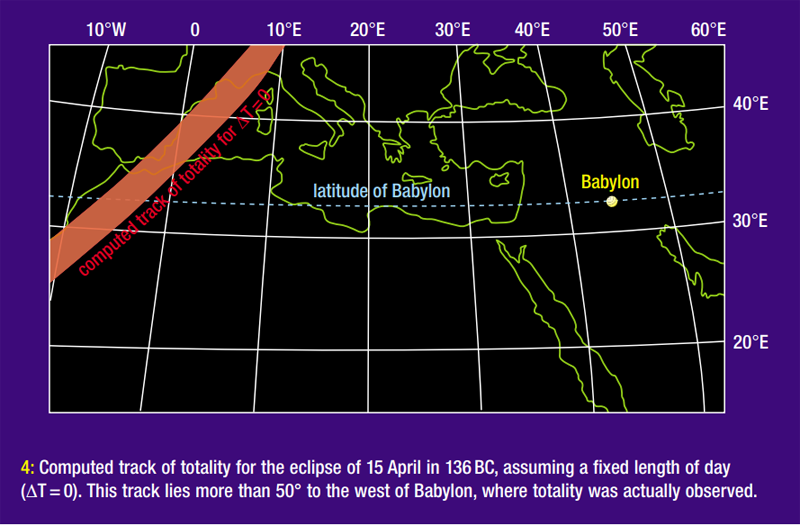
Image credit: F Richard Stephenson (2003): Historical eclipses and Earth's rotation
This is what the eclipse would have looked like in Babylon with ΔT = 0
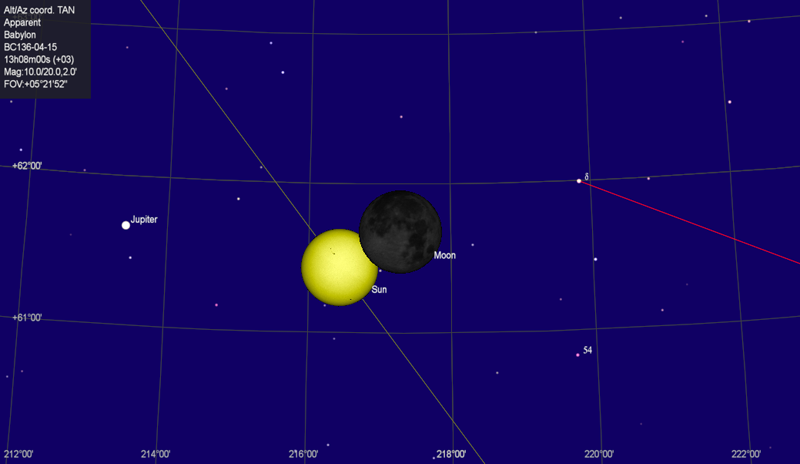
SE-136BC A
- Moon: Ecliptic L: +21°31'45" B:+00°28'07"
- ΔT: 0
By adjusting Earth rotation by 12,025 seconds the solar eclipse can be made to fit as described
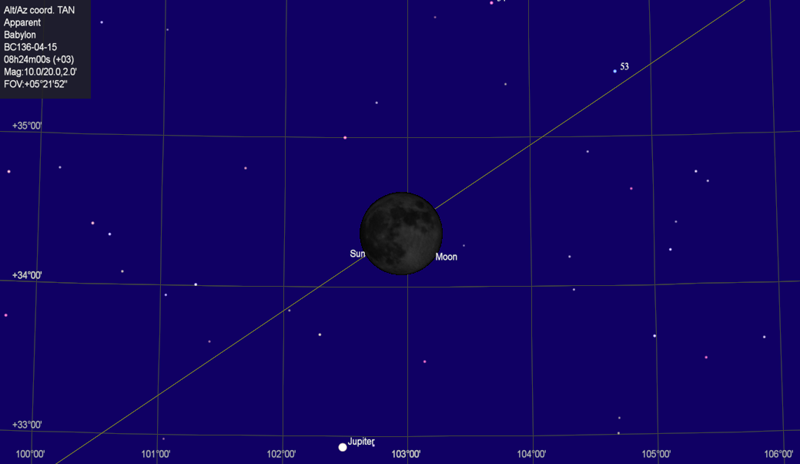
SE-136BC B
- Moon: Ecliptic L: +21°31'24" B:-00°00'52"
- ΔT: 12025.35s ( 03h20m25.35s )
This is the difference that ΔT makes
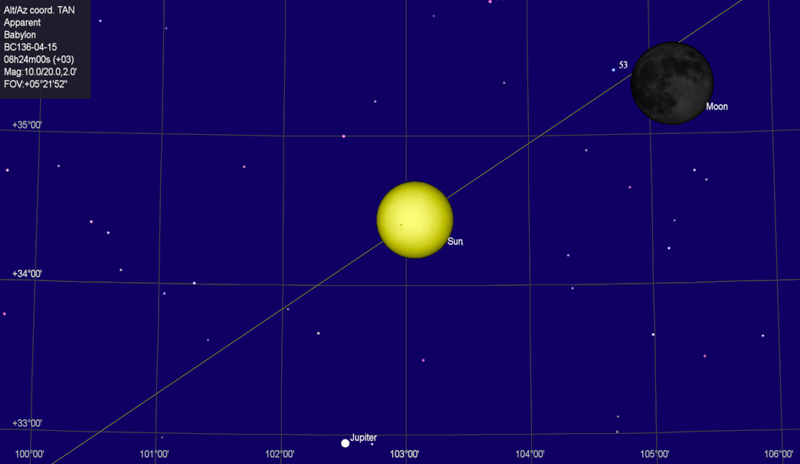
SE-136BC C
- Moon: Ecliptic L: +19°27'14" B:-00°12'19"
- ΔT: 0
- Degree difference between SE-136BC B & C: 2.075°, 02°04'31" (almost 1 cubit)
Whilst Stephenson is specifically discussing ΔT, the effects would be similar if the lunar nodes were manipulated by a degree or so.
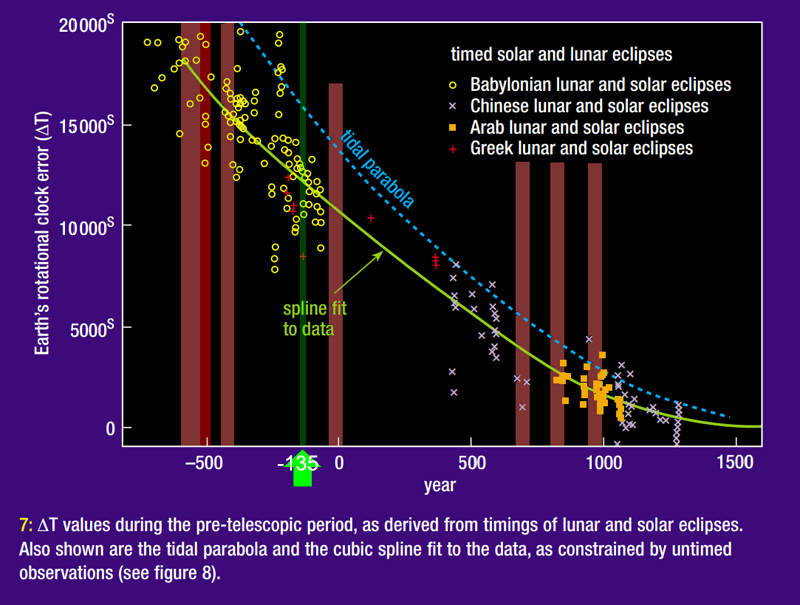
Image credit: F Richard Stephenson: Historical eclipses and Earth's rotation (highlights added)
We have reused the above image to illustrate where the solar eclipse of April 136 BC (-135) lies in relation to the pattern of the nodal periods
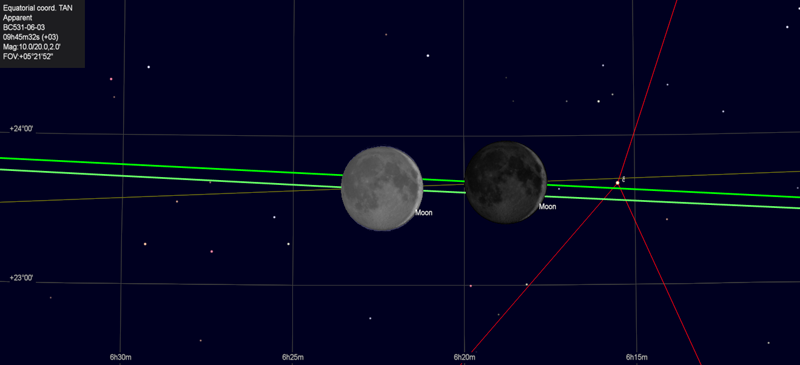
Notice how a 1° lunar node position makes a difference to the path of the moon.
We have considered two ways the moon and earth can be manipulated using ΔT and the position of the lunar nodes, to make eclipses fit the ancient descriptions. Neither of these methods affect the length of the lunar cycle. We simulated what would happen if the nodal period pattern (Table 1) continued uninterrupted, using several methods. The results varied between and 1° and 4°+ difference.
More articles